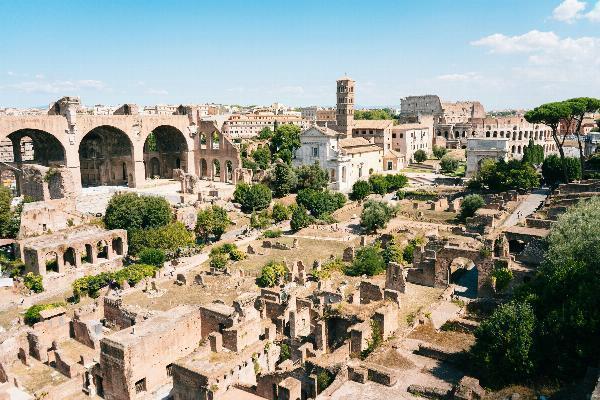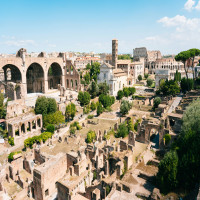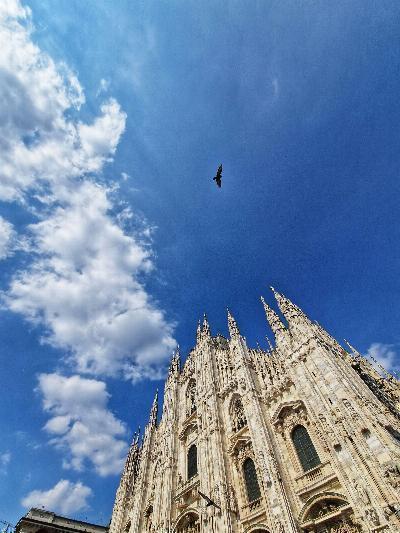Exploring the Roman Forum: A Journey Through Ancient Rome’s Heart

Strong 8k brings an ultra-HD IPTV experience to your living room and your pocket.
The Roman Forum, situated at the heart of Rome, is an unparalleled historical site that beckons travelers and history enthusiasts from around the world. This vast archaeological area was once the epicenter of Roman public life, encompassing political, religious, and social activities. Today, the Roman Forum stands as a powerful reminder of the grandeur and complexity of ancient Roman civilization, inviting visitors to immerse themselves in its storied past.
Stretching between the Capitoline Hill and the Palatine Hill, the Roman Forum was originally a marketplace. Over centuries, it evolved into a bustling hub where citizens gathered to witness significant events, engage in commerce, and participate in public discourse. As you explore the Forum, the remnants of its temples, basilicas, and triumphal arches tell the story of a society that revered architecture and public spaces as central to its identity.
One of the key aspects of visiting the Roman Forum is understanding the context of its historical significance. This area was not just a place for administrative and legal matters but also a stage for grand celebrations and political power plays. The Forum housed important structures like the Temple of Saturn, which was dedicated to the god Saturn and served as the state treasury. Another notable structure is the Arch of Titus, an iconic monument commemorating the Roman victory in the Jewish War, which stands as a testament to Rome’s military prowess and celebratory architecture.
For those planning a visit, obtaining Roman Forum tickets is a crucial step. These tickets provide not only access to the Forum but also to the nearby Palatine Hill and the Colosseum, ensuring a comprehensive exploration of Rome’s ancient marvels. The combined ticket allows you to wander through the ruins of the Forum, stroll the grounds of the Palatine Hill—where Romulus is said to have founded Rome—and marvel at the Colosseum, the grand amphitheater that hosted gladiatorial games and public spectacles. This ticket provides an enriching experience that connects various aspects of Roman history and culture.
As you traverse the Roman Forum, you’ll encounter the remnants of several other significant structures. The Basilica Julia, for instance, was a grand building used for legal proceedings and commercial transactions. Although much of its original structure is now in ruins, its influence on architectural design is evident in many later basilicas throughout Europe. The Rostra, an elaborate platform from which orators addressed the public, highlights the importance of rhetoric and public speaking in Roman society.
The Forum’s layout reflects the complex nature of Roman urban planning. The space was carefully designed to accommodate the multifaceted needs of a bustling city center. Temples, such as the Temple of Vesta with its distinctive round shape, and the Temple of Castor and Pollux with its impressive columns, were not only places of worship but also integral parts of the social and political landscape. These structures, despite their ruins, offer valuable insights into Roman religious practices and civic life.
Walking through the Forum today, it’s easy to imagine the vibrant scenes that once filled these spaces. The area was alive with the sounds of commerce, public debates, and ceremonial processions. The Forum was also a site for crucial political events, including the trial and execution of prominent figures like Julius Caesar. Understanding these historical events provides a deeper appreciation for the significance of the Forum in the broader context of Roman history.
To enhance your visit, consider joining a guided tour. Knowledgeable guides can offer detailed explanations of the Forum’s many features, providing historical context and shedding light on the significance of various structures. A guided tour can also enrich your understanding of the social and political dynamics that shaped the Roman Forum, making your visit more immersive and informative.
In addition to its historical and architectural significance, the Roman Forum also serves as a symbol of the enduring legacy of Rome. The site continues to attract scholars, archaeologists, and visitors eager to uncover the layers of history embedded in its ruins. Each column, arch, and inscription contributes to a larger narrative that connects past and present, offering insights into the values and achievements of one of history’s greatest civilizations.
In conclusion, the Roman Forum stands as a magnificent testament to ancient Rome’s grandeur. Acquiring Roman Forum tickets is an essential step for anyone seeking to explore this historic site fully. As you walk among the ruins and imagine the bustling life that once thrived here, you’ll gain a profound appreciation for the legacy of Rome and the impact it has had on the world. Whether you’re a history buff, an architecture enthusiast, or simply a curious traveler, the Roman Forum promises an unforgettable journey through the heart of one of history’s most influential cities.
Note: IndiBlogHub features both user-submitted and editorial content. We do not verify third-party contributions. Read our Disclaimer and Privacy Policyfor details.



